Seiichi Yoshida's Diary of Comet Observations (2016)
|
Japanese version Home page |
Updated on December 6, 2016 |
![]()
|
Go to Seiichi Yoshida's Diary of Comet Observations in 2017. |
![]()
|
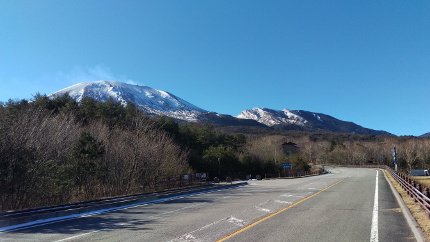 |
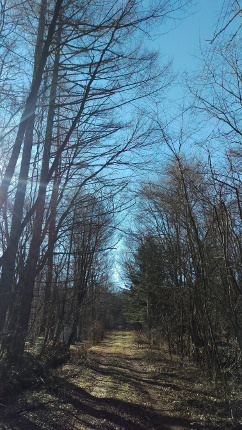 |
I observed 5 comets visually on Dec. 2 and 3 in Kita-karuizawa, Gunma, Japan.
The weather was fine with no clouds. Rendezvous of Moon and Venus in the evening sky was very beautiful.
Bright comets C/2015 V2 and C/2016 U1 are near by Whirlpool Galaxy M51, whose spiral arms are clearly visible.
C/2015 V2 ( Johnson )
Dec. 2 12.8 mag Dia. 1.5' DC 7 (40.0-cm reflector 144x)
Bright, strongly condensed, and easy to see.
C/2016 U1 ( NEOWISE )
Dec. 2 13.1 mag Dia. 1.5' DC 1 (40.0-cm reflector 144x)
Diffuse with no central condensation.
43P/Wolf-Harrington
Dec. 2 13.3 mag Dia. 1.0' DC 3 (40.0-cm reflector 144x)
Unexpectedly, it looks bright and large still now.
45P/Honda-Mrkos-Pajdusakova
Dec. 3 11.0 mag Dia. 1.7' DC 2 (40.0-cm reflector 144x)
Very bright. Diffuse but easy to see.
144P/Kushida
Dec. 2 13.3 mag Dia. 1.1' DC 2 (40.0-cm reflector 144x)
Bright and well visible still now.
|
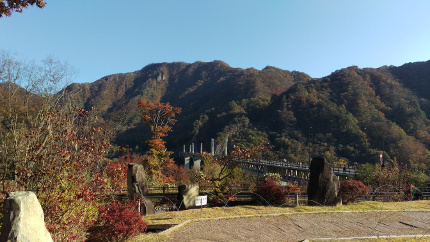 |
 |
 |
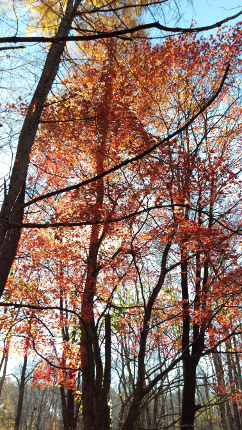 |
 |
I observed 7 comets visually on Nov. 4 and 5 in Kita-karuizawa, Gunma, Japan.
The excellent fine weather with no clouds continued for over 30 hours from Nov. 4 to 5. But unfortunately, stars in the low sky look de-focussed. The weather became cloudy with strong wind in the morning on Nov. 6.
I also tried to observe 56P. I found a faint object at the predicted position. So I guessed it might be 56P. However, after I came back home, I checked star catalogs and found a 14.7 mag star at the position.
I also saw a bright shooting star with a very long trail from Draco to Sagittarius at about 09:24:15 (UT).
C/2011 KP36 ( Spacewatch )
Nov. 4 fainter than 12.9 mag Dia. 0.7' (40.0-cm reflector 257x)
Not visible.
C/2015 V2 ( Johnson )
Nov. 4 13.3 mag Dia. 1.5' DC 5 (40.0-cm reflector 144x)
Nov. 5 13.0 mag Dia. 1.1' DC 4 (40.0-cm reflector 257x)
Very bright and well visible.
29P/Schwassmann-Wachmann 1
Nov. 4 12.3 mag Dia. 0.9' DC 1 (40.0-cm reflector 144x)
Diffuse, but it seems to be brighter than I have expected.
43P/Wolf-Harrington
Nov. 4 12.7 mag Dia. 0.7' DC 4-5 (40.0-cm reflector 144x)
Bright and well visible.
144P/Kushida
Nov. 4 12.2 mag Dia. 1.0' DC 1 (40.0-cm reflector 144x)
Hard to see due to a nearby bright star.
226P/Pigott-LINEAR-Kowalski
Nov. 4 14.5 mag Dia. 0.5' DC 2 (40.0-cm reflector 257x)
Extremely diffuse and faint.
237P/LINEAR
Nov. 4 fainter than 11.6 mag Dia. 0.8' (40.0-cm reflector 257x)
Nov. 5 12.0 mag Dia. 0.7' DC 3 (40.0-cm reflector 257x)
Hard to see due to the low sky condition and moon light.
|
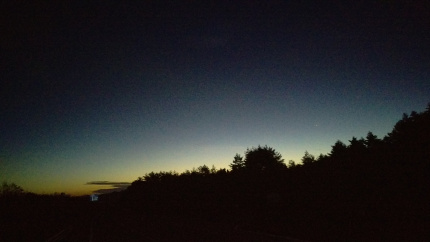 |
 |
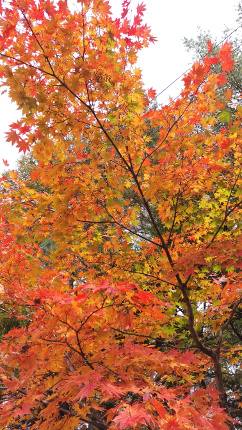 |
 |
I observed 5 comets and 1 asteroid visually on Oct. 20 in Kita-karuizawa, Gunma, Japan.
The weather was fine with no clouds. There was bright moon light in the morning, but I could see three bright comets visually.
C/2011 KP36 ( Spacewatch )
13.1 mag Dia. 0.9' DC 2 (40.0-cm reflector 257x)
Diffuse as before, so not easy to see despite the brightness.
C/2015 V2 ( Johnson )
13.1 mag Dia. 0.6' DC 5 (40.0-cm reflector 257x)
Strongly condensed, and easy to see.
43P/Wolf-Harrington
12.9 mag Dia. 0.4' DC 4 (40.0-cm reflector 257x)
Looks better than expected.
144P/Kushida
12.6 mag Dia. 0.8' DC 2 (40.0-cm reflector 257x)
I observed it in late time in the morning twilight. Diffuse, but it seems to large.
237P/LINEAR
12.4 mag Dia. 0.6' DC 5 (40.0-cm reflector 257x)
Extremely low, just before it hides back of mountains. Background stars also look de-focussed, so DC is uncertain.
(3200) Phaethon
fainter than 15.0 mag (40.0-cm reflector 257x)
It is passing near by the earth and the condition is very good. But it seems faint and I could not see it. At first, I found a star, not recorded in the GSC, at the predicted position, so I guessed it is Phaethon. But actually, it did not move at all during 20 minutes, so I noticed it is a background star.
|
 |
 |
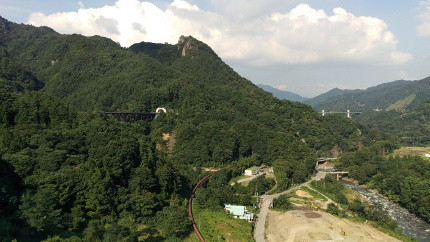 |
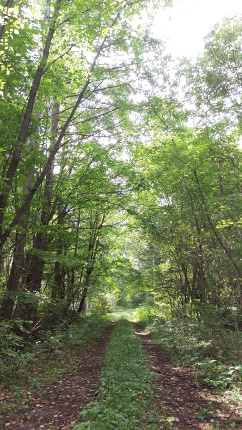 |
I observed 8 comets visually on Sept. 1 in Kita-karuizawa, Gunma, Japan.
Many clouds covered the sky sometimes.
C/2011 KP36 ( Spacewatch )
13.0 mag Dia. 0.8' DC 3 (40.0-cm reflector 144x)
Diffuse, but not so hard to see.
C/2013 US10 ( Catalina )
fainter than 13.5 mag Dia. 0.6' (40.0-cm reflector 257x)
I could not see the comet due to so many faint background stars.
C/2014 W2 ( PanSTARRS )
14.0 mag Dia. 0.6' DC 2 (40.0-cm reflector 257x)
It became very faint and diffuse, although it had been bright, strongly condensed and easy to see for a long time.
C/2016 A8 ( LINEAR )
12.6 mag Dia. 0.3' DC 6 (40.0-cm reflector 144x)
Bright, strongly condensed and easy to see, but very tiny.
29P/Schwassmann-Wachmann 1
fainter than 14.4 mag Dia. 0.8' (40.0-cm reflector 257x)
I expected to see it because it was reported bright in early August. But actually, I could not see the comet due to the nearby 13.9 mag and 14.4 mag stars.
53P/Van Biesbroeck
14.0 mag Dia. 0.6' DC 2 (40.0-cm reflector 257x)
Near limit.
174P/(60558) Echeclus
15.0 mag Dia. 0.3' DC 4 (40.0-cm reflector 257x)
Lucky that it brigthened in outburst on Aug. 28, just before my observation trip. I could see the comet again after 10 years blank. Near limit. I felt it was somewhat diffuse. However, the diameter and DC are very uncertain because the comet is too faint.
226P/Pigott-LINEAR-Kowalski
fainter than 13.7 mag Dia. 0.5' (40.0-cm reflector 257x)
I expected to see it because it was reported as 12 mag in August. But actually, I could not see the comet. I think it is very faint.
|
 |
 |
 |
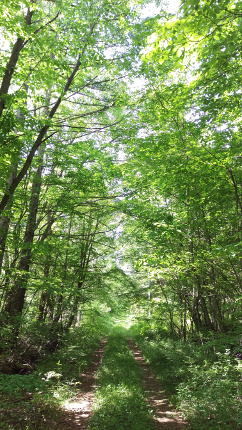 |
I observed 7 comets visually on June 3 in Kita-karuizawa, Gunma, Japan.
Almost cloudy in the evening, so I observed comets through small gaps of clouds. The clouds went away after 21:30(JST). But the sky was covered with thin clouds all night, so the sky condition was not good.
C/2013 X1 ( PanSTARRS )
7.9 mag Dia. 7' DC 5 (40.0-cm reflector 36x)
Hard to guide my telescope due to clouds, and the sky was getting brighter and brighter. The comet is very bright and large.
C/2014 S2 ( PanSTARRS )
11.8 mag Dia. 2.3' DC 4 (40.0-cm reflector 75x)
It became fainter rapidly during one month.
C/2014 W2 ( PanSTARRS )
13.1 mag Dia. 1.6' DC 6 (40.0-cm reflector 144x)
Strongly condensed and easy to see as before.
C/2015 WZ ( PanSTARRS )
fainter than 12.4 mag Dia. 1.4' (40.0-cm reflector 144x)
Unexpectedly, not visible. It overlapped on background stars at first, so I kept viewing for 20 minutes and waited until the comet moved. But anyway, it was not visible.
9P/Tempel 1
13.0 mag Dia. 0.9' DC 4 (40.0-cm reflector 144x)
It became much brighter, and easy to see.
116P/Wild 4
fainter than 13.1 mag Dia. 1.1' (40.0-cm reflector 257x)
Not visible, probably due to the bad sky condition.
252P/LINEAR
fainter than 12.5 mag Dia. 1.6' (40.0-cm reflector 144x)
As already reported by Yoshimoto and Harikae, the comet seems to have fade rapidly. Unexpectedly, I could not see the comet even with 0.40-m reflector.
Because the comet located in the dense region of faint background stars, I tried to see a moving diffuse comet for totally 30 minutes both with 75x and 144x magnification. However, the comet was not visible.
|
 |
 |
 |
I observed 11 comets visually between May 1-4 in Kita-karuizawa, Gunma, Japan.
On May 1, many clouds existed in the evening. Especially the northern sky was cloudy. The whole sky became cloudy after 21:30. It became fine at midnight. But it became cloudy again in the morning, only Moon and few stars were visible.
On May 2, it was humid. The sky was covered by fog after 21:10.
On May 4, it was completely fine with no clouds in daytime after heavy rain, but suddenly it became cloudy in the evening. I could observe comets through large gaps of clouds, although it became weakly rainy in short time during my observation. It became completely cloudy after 21:20, but it became completely fine in the morning.
C/2013 US10 ( Catalina )
May 2 11.6 mag Dia. 1.6' DC 2 (40.0-cm reflector 144x)
May 4 11.9 mag Dia. 1.4' DC 2 (40.0-cm reflector 144x)
Unexpectedly, it looks bright still now.
C/2013 X1 ( PanSTARRS )
May 4 7.9 mag Dia. 5' DC 5 (40.0-cm reflector 36x)
Bright. It looks like a globular cluster.
C/2014 S2 ( PanSTARRS )
May 1 10.3 mag Dia. 5.0' DC 7 (40.0-cm reflector 36x)
May 2 10.2 mag Dia. 6' DC 6 (40.0-cm reflector 36x)
May 4 10.0 mag Dia. 6' DC 5 (40.0-cm reflector 36x)
Strongly condensed and easy to see as before.
C/2014 W2 ( PanSTARRS )
May 1 13.1 mag Dia. 1.0' DC 6-7 (40.0-cm reflector 144x)
May 2 12.2 mag Dia. 1.3' DC 6 (40.0-cm reflector 144x)
May 4 13.0 mag Dia. 0.9' DC 6 (40.0-cm reflector 144x)
Strongly condensed and easy to see as before.
C/2015 WZ ( PanSTARRS )
May 4 12.5 mag Dia. 1.5' DC 0-1 (40.0-cm reflector 144x)
Extremely diffuse.
9P/Tempel 1
May 1 14.6 mag Dia. 0.4' DC 3 (40.0-cm reflector 257x)
May 2 13.9 mag Dia. 0.8' DC 1-2 (40.0-cm reflector 257x)
May 4 13.8 mag Dia. 1.1' DC 3 (40.0-cm reflector 144x)
On May 1, I think I underestimated because it located near by a star. On May 2, the sky condition was good. It looks bright, but diffuse and fainter than expected. On May 4, it looks somewhat brighter.
77P/Longmore
May 1 14.4 mag Dia. 0.5' DC 3 (40.0-cm reflector 257x)
May 2 13.4 mag Dia. 0.7' DC 3 (40.0-cm reflector 257x)
Near by Sombrero Galaxy M104, whose dark band looks impressive. On May 2, the sky condition was good and it looked brighter.
81P/Wild 2
May 1 11.9 mag Dia. 1.2' DC 3 (40.0-cm reflector 144x)
May 2 11.6 mag Dia. 1.9' DC 2-3 (40.0-cm reflector 144x)
May 4 12.0 mag Dia. 1.0' DC 3 (40.0-cm reflector 144x)
Diffuse. On May 2, the sky condition was good and it was easy to see.
104P/Kowal 2
May 4 13.1 mag Dia. 0.5' DC 3 (40.0-cm reflector 257x)
Small.
116P/Wild 4
May 1 13.0 mag Dia. 0.9' DC 3 (40.0-cm reflector 257x)
May 4 13.7 mag Dia. 0.8' DC 3 (40.0-cm reflector 257x)
Well visible, better than expected.
252P/LINEAR
May 1 8.9 mag Dia. 9' DC 2 (40.0-cm reflector 36x)
May 1 7.9 mag Dia. 14' DC 1 (10x70 monocular)
May 4 7.9 mag Dia. 16' DC 1 (10x70 monocular)
May 4 8.5 mag Dia. 10' DC 3 (40.0-cm reflector 36x)
It became faint, but bright and large still now.
|
|
 |
I observed 7 comets visually on Apr. 8-9 in Mt. Hanadate, Ibaraki, Japan.
Finally I could see Comet 252P/LINEAR, passing near by the earth and bright as a naked comet.
Cherry blossoms are in full bloom in Mt. Hanadate.
C/2014 S2 ( PanSTARRS )
Apr. 8 9.9 mag Dia. 4.5' DC 6 (40.0-cm reflector 36x)
Apr. 9 9.9 mag Dia. 5.5' DC 6 (40.0-cm reflector 36x)
Well condensed, bright and easy to see.
C/2014 W2 ( PanSTARRS )
Apr. 8 12.2 mag Dia. 1.2' DC 6 (40.0-cm reflector 144x)
Small, but strongly condensed and easy to see.
9P/Tempel 1
Apr. 8 14.4 mag Dia. 0.3' DC 3-4 (40.0-cm reflector 257x)
Still faint.
77P/Longmore
Apr. 8 14.6 mag Dia. 0.5' DC 3 (40.0-cm reflector 257x)
Faint, but clearly visible than expected.
81P/Wild 2
Apr. 9 11.7 mag Dia. 1.3' DC 2 (40.0-cm reflector 144x)
Hard to see due to the thin clouds. It located near by an open cluster M35.
116P/Wild 4
Apr. 8 13.8 mag Dia. 0.5' DC 2 (40.0-cm reflector 257x)
Very hard to see probably due to the low sky haze. It located near by delta Sco.
252P/LINEAR
Apr. 8 6.3 mag Dia. 30' DC 3 (10x70 monocular)
Extremely large. Diffuse, but easy to see.
|
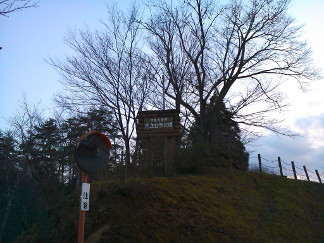 |
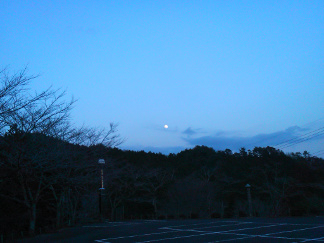 |
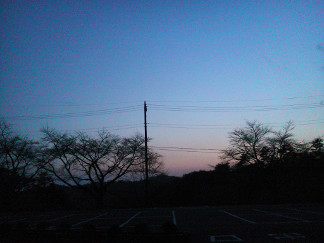 |
I observed 5 comets visually on Mar. 22 in Mt. Hanadate, Ibaraki, Japan.
Comet 252P/LINEAR is passing near by the earth and bright as a naked eye comet in the Southern Hemisphere. Today is the closest approach of its fragment P/2016 BA14 ( PanSTARRS ) to the earth. So I tried to observe it despite of full moon.
Many clouds existed in the afternoon. But the weather became fine with no clouds at night. The sky transparency was not good.
C/2013 US10 ( Catalina )
9.7 mag Dia. 2.2' DC 1 (40.0-cm reflector 144x)
Diffuse and hard to see due to the strong moonlight. It located near by an open cluster NGC 1528.
C/2014 S2 ( PanSTARRS )
9.1 mag Dia. 2.5' DC 5 (40.0-cm reflector 144x)
Strongly condensed, bright and easy to see despite of the strong moonlight.
460P/PanSTARRS
13.0 mag DC ? (40.0-cm reflector 257x)
Only several hours after the closest approach to the earth. It moved among stars very fast.
Because it located very near by the full moon and the backgroudn sky was so bright, I waited until the comet passed near by bright landmark stars. I wondered if I could not see it due to the strong moonlight, but I was lucky and I could see it. Motion was confirmed during 20 minutes.
The sky condition was bad and background faint stars looked somewhat fuzzy. So I could not confirm if the comet looked stellar or cometary.
81P/Wild 2
fainter than 12.5 mag Dia. 0.9' (40.0-cm reflector 257x)
Not visible due to the strong moonlight. It located near by Crab Nebula, but I could not enjoy the rendezvous.
333P/LINEAR
12.0 mag Dia. 1.0' DC 2 (40.0-cm reflector 144x)
Hard to see due to the strong moonlight. It located near by Pleiades, so easy to guide the telescope.
|
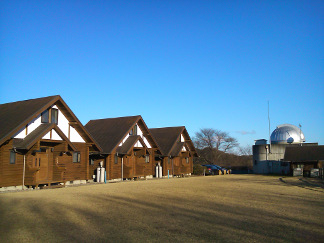 |
I observed 9 comets visually on Jan. 9 in Mt. Hanadate, Ibaraki, Japan.
The weather was completely fine with no clouds in the evening and in the morning. But it was cloudy around mid night, with slight snow. The sky was not so clear. I could not see the Milky Way.
In the morning eastern sky, Venus and Saturn encounters very close.
I also tried to observe 22P and 10P. But 22P was not visible due to the bright background low sky. 10P was not visible because too close to 12-mag and 13-mag stars.
C/2013 US10 ( Catalina )
7.0 mag Dia. 11' DC 6 Tail 24' (p.a. 185 deg) (40.0-cm reflector 36x)
6.4 mag Dia. 17' DC 6 (10x70 monocular)
Very bright and large. It looks fan shaped.
C/2013 X1 ( PanSTARRS )
8.6 mag Dia. 7' DC 6 (40.0-cm reflector 36x)
Very bright and large.
C/2014 S2 ( PanSTARRS )
10.0 mag Dia. 2.5' DC 7 (40.0-cm reflector 75x)
Sharp central condensation. It looks small, probably because it located near by a 7-mag star.
C/2014 W2 ( PanSTARRS )
12.4 mag Dia. 0.9' DC 3-4 (40.0-cm reflector 144x)
More difficult to see than expected.
C/2014 W11 ( PanSTARRS )
fainter than 14.0 mag Dia. 0.5' (40.0-cm reflector 257x)
Not visible.
C/2015 X8 ( NEOWISE )
12.7 mag Dia. 1.3' DC 0 (40.0-cm reflector 144x)
Completely diffuse with no central condensation.
116P/Wild 4
13.3 mag Dia. 0.7' DC 3 (40.0-cm reflector 257x)
Also visible with 144x magnification.
230P/LINEAR
13.9 mag Dia. 0.6' DC 4 (40.0-cm reflector 257x)
I could see it in a very short time because clouds covered the sky.
249P/LINEAR
fainter than 13.0 mag Dia. 0.4' (40.0-cm reflector 257x)
Not visible.
![]()
|
Go to Seiichi Yoshida's Diary of Comet Observations in 2015. |
![]()